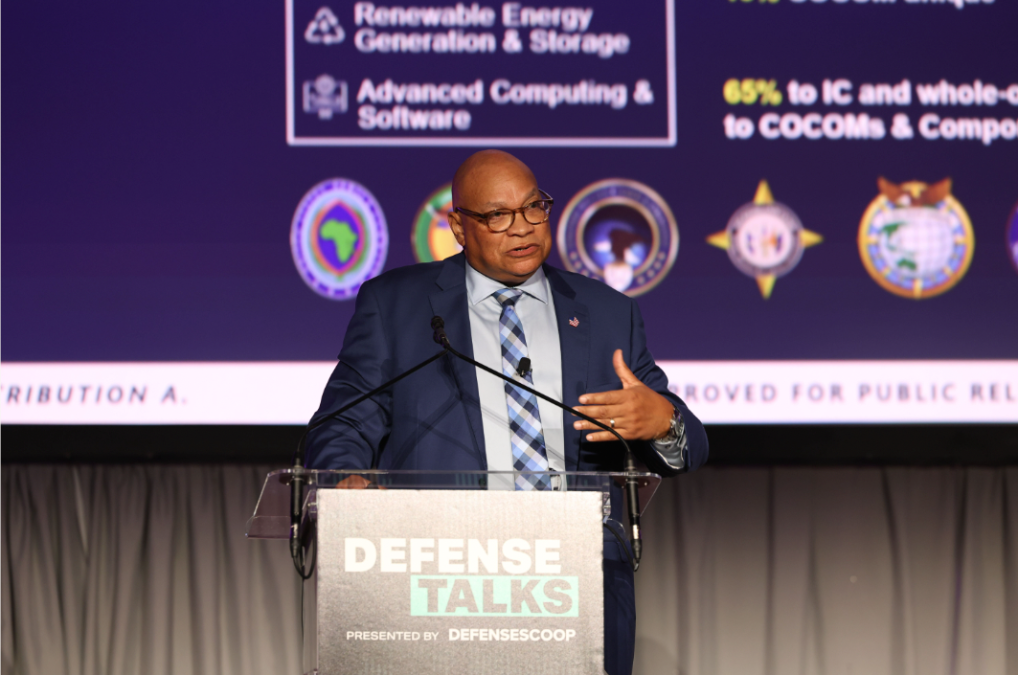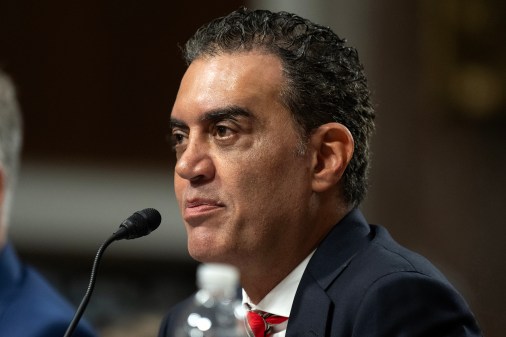DOD critical tech office moves to speed up software transitions

A key hub in the Pentagon’s research-and-engineering directorate has amassed more than 300 capability transitions in the last three years — and a further uptick is expected, according to its chief.
Maynard Holliday, who oversees the critical technologies office under R&E, spotlighted how his team is helping shape a more vibrant innovation ecosystem, during his opening keynote on Wednesday at DefenseTalks, hosted by DefenseScoop.
“Since we began tracking three years ago, we have recorded over 308 successful transitions across all [critical technology areas, or] CTAs — with the exception of renewable energy generation and storage, advanced computing and software, and human-machine interfaces — because those principal directors just came on board within the last six months, and they are still working on their roadmaps,” said Holliday, who is performing the duties of assistant secretary of defense for critical technologies.
“Sixty percent of these transitions have already been delivered to the combatant commands or their military service components — some, [delivered] directly by their service innovation unit, while others have been made available for commercial purchases,” he added.
In 2022, the Defense Department’s Chief Technology Officer Heidi Shyu (who is also Holliday’s boss and tapped him for his current role) unveiled a list of 14 critical technology priorities and a new vision to help transform R&E initiatives to yield deliverable military capabilities.
“When Ms. Shyu put out that memo expanding the critical areas, it was difficult to get the right people in place because these jobs are not permanent. They are what we call ‘tech-refresh jobs’ — similar to DARPA program managers, in the sense that you’re only in the roles for a temporary amount of time. And so to get people to say, ‘Commit, you know, to a two-to-four year assignment, that doesn’t disrupt their families,’ we were lucky in that — and I’ll give credit to our leadership — to say two out of three of those positions, we’ll allow the principal director to be remote,” Holliday told DefenseScoop after his keynote.
Last year, as part of a broader organizational shakeup, the position of deputy CTO for critical technologies — which Holliday held — was replaced by a newly created position of ASD for critical tech, the role that he’s currently performing.
Holliday confirmed that he recently hired officials to cover the portfolios for renewable energy generation and storage, advanced computing and software, and human-machine interfaces. One official is based in Maryland, one is in Boston and the other is in North Carolina.
Now that those CTA leads are online, he expects to see an increase in tech transitions — because compared to hardware, software transfers unfold much faster.
“You have to have software to run autonomy, AI, hypersonics guidance and control — all of that, software touches. But as you see in the commercial industry, Meta and Google, you know, they push out these software advances really fast. And so, what our principal director for advanced computing software is working on is what we call the authority to operate — we are trying to streamline that process,” Holliday explained.
“We don’t want to move as fast as the commercial sector, because we have life and death [military considerations]. But we absolutely need to do better,” he told DefenseScoop.






